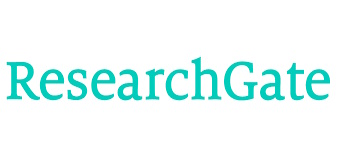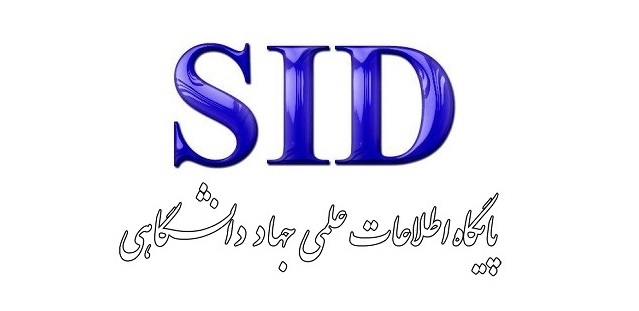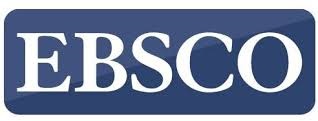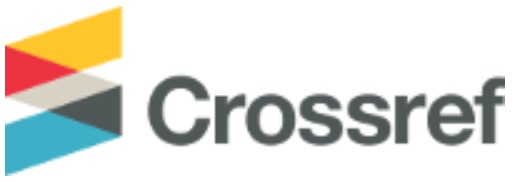Submissions
Author Guidelines
Authors are invited to make a submission to this journal. All submissions will be assessed by an editor to determine whether they meet the aims and scope of this journal. Those considered to be a good fit will be sent for peer review before determining whether they will be accepted or rejected.
Before making a submission, authors are responsible for obtaining permission to publish any material included with the submission, such as photos, documents and datasets. All authors identified on the submission must consent to be identified as an author. Where appropriate, research should be approved by an appropriate ethics committee in accordance with the legal requirements of the study's country.
An editor may desk reject a submission if it does not meet minimum standards of quality. Before submitting, please ensure that the study design and research argument are structured and articulated properly. The title should be concise and the abstract should be able to stand on its own. This will increase the likelihood of reviewers agreeing to review the paper. When you're satisfied that your submission meets this standard, please follow the checklist below to prepare your submission.
Welcome to Management Strategies and Engineering Sciences (MSES). We are committed to publishing high-quality, original research in the fields of management and engineering sciences. To assist authors in preparing and submitting their manuscripts, we have provided detailed guidelines below. Following these instructions will help expedite the review and publication process.
1. Manuscript Preparation
1.1 General Format
- Manuscripts should be written in clear, concise English.
- All submissions must be in Microsoft Word (.doc or .docx) format. PDF submissions are not accepted.
- Use a standard font, such as Times New Roman, 12-point, and double spacing throughout the text, including references, tables, and figure captions.
- Pages should be numbered consecutively, and all margins should be at least 2.5 cm (1 inch).
- Manuscripts should be structured as follows: Title Page, Abstract, Keywords, Main Text, Acknowledgments (if applicable), References, Tables, and Figures.
1.2 Title Page
- Title: The title should be clear, descriptive, and concise (up to 20 words).
- Author Information: Include the full names, affiliations, and contact details (email address) for all authors. The corresponding author should be clearly identified.
- Acknowledgments: Authors should briefly mention funding sources or institutional support.
1.3 Abstract
- The abstract should provide a summary of the research, including the purpose, methodology, results, and conclusions.
- The abstract should not exceed 250 words and should be written in one paragraph, with no references or abbreviations.
1.4 Keywords
- Authors must provide 4 to 6 keywords that accurately reflect the content of the manuscript.
- Keywords should be listed in alphabetical order, separated by commas.
1.5 Main Text The main text of the manuscript should follow this structure:
-
Introduction: Clearly state the research problem, objectives, and significance of the study. Provide a brief review of relevant literature and justify the need for the study.
-
Literature Review (Optional): Depending on the study, a separate section for the literature review may be included to establish the context of the research and identify gaps that the study aims to address.
-
Methods: Provide a detailed description of the research design, materials, procedures, and analysis methods. The methods should be transparent and replicable.
-
Results: Present the findings of the study in a clear and logical manner. Results may be illustrated with tables, figures, and graphs where appropriate. Avoid interpretation or discussion in this section.
-
Discussion: Interpret the results, explain their significance, and relate them to the objectives and literature discussed in the introduction. Highlight any limitations of the study and suggest future research directions.
-
Conclusion: Summarize the main findings and their implications for theory, practice, or policy. The conclusion should not introduce new information.
1.6 Tables and Figures
- Tables: Tables should be numbered consecutively and placed after the references section. Each table must have a clear and concise title and should be referenced in the main text.
- Figures: Figures should be numbered consecutively and provided in high-resolution formats (minimum 300 DPI). Figures should be submitted as separate files, not embedded in the manuscript. Captions for figures should be included at the end of the manuscript, after the tables.
1.7 References
- MSES follows the APA (7th edition) citation style for references. All in-text citations and reference list entries must conform to this style.
- The reference list should be arranged alphabetically by the last names of the first authors. Each reference must be complete, accurate, and correspond to an in-text citation.
Examples of references:
-
Journal article:
Smith, J. A., & Doe, M. (2020). Innovations in management practices: An empirical study. Journal of Business and Management, 12(3), 45–60. https://doi.org/10.1234/jbm.2020.12345 -
Book:
Johnson, K. L. (2018). Engineering innovation and strategic management. Cambridge University Press.
2. Manuscript Types
2.1 Original Research Articles
- Original research articles should present new and significant findings based on empirical or theoretical research. These manuscripts typically range from 5,000 to 8,000 words, excluding references, tables, and figures.
2.2 Review Articles
- Review articles provide a comprehensive synthesis of research on a specific topic, identifying trends, gaps, and future directions. Review articles should be 4,000 to 7,000 words in length.
2.3 Case Studies
- Case studies examine specific instances of management practices or engineering applications, providing in-depth analysis and insights. Case studies should be 3,000 to 5,000 words.
2.4 Short Communications
- Short communications are brief reports on significant developments or preliminary findings in the fields of management and engineering sciences. These manuscripts should be 2,000 to 3,000 words.
3. Submission Guidelines
3.1 Submission Platform
- Authors should submit their manuscripts through the journal’s online submission system. All authors must register with the system to create an account before submission.
- Only manuscripts submitted through the system will be considered for review.
3.2 Cover Letter
- A cover letter must accompany the manuscript submission. The cover letter should include the title of the manuscript, a brief statement of its significance, and a declaration that the work is original, unpublished, and not under consideration elsewhere.
3.3 Ethical Compliance
- Authors must confirm compliance with the Publication Ethics of MSES, including but not limited to:
- Full disclosure of conflicts of interest
- Ethical approval for research involving humans or animals (if applicable)
- Plagiarism-free content, as checked by plagiarism detection software (e.g., iThenticate)
3.4 ORCID iD
- Authors are encouraged to include their ORCID iDs when submitting their manuscripts. ORCID iDs help ensure proper attribution of authorship and are increasingly recognized as part of good scholarly practice.
4. Review Process
4.1 Peer-Review Process
- All manuscripts undergo a double-blind peer-review process. This means that both the authors and reviewers remain anonymous during the review process.
- Manuscripts are reviewed by at least two or three expert reviewers in the relevant field, who provide critical and constructive feedback to the authors.
- The review process typically takes 6 to 8 weeks, depending on the availability of reviewers and the complexity of the manuscript.
4.2 Revisions
- Based on reviewer feedback, the editorial team may request revisions to the manuscript. Authors will be given a specific timeline to submit their revised manuscript. Major revisions may require additional rounds of review.
4.3 Final Decision
- The final decision on the manuscript’s acceptance or rejection rests with the editor-in-chief, based on the reviewers’ recommendations and the quality of the revisions.
5. Post-Acceptance
5.1 Proofs
- After acceptance, authors will receive page proofs for review. Authors must carefully check the proofs for any errors or formatting issues. Minor changes are allowed at this stage, but substantial revisions to the content are not permitted.
5.2 Publication
- Once final proofs are approved, the article will be published online as part of the upcoming issue. MSES operates a continuous publication model, meaning that articles are published as soon as they are ready, rather than waiting for a complete issue.
5.3 Open Access
- As an open-access journal, MSES ensures that all published articles are freely accessible to the public. There are no article processing charges (APCs), ensuring that publication is free for all authors.
5.4 Archiving
- Published articles are archived in recognized repositories such as MAGIRAN, SID, and NOORMagz, ensuring long-term preservation and access to the content.
6. Ethical Responsibilities
6.1 Authorship
- All authors must meet the criteria for authorship, as defined by the journal's Publication Ethics. Anyone who has contributed significantly to the research should be included as an author. Changes to authorship must be communicated to the editorial office and agreed upon by all co-authors.
6.2 Plagiarism
- MSES utilizes iThenticate plagiarism detection software to screen submissions. Any manuscript found to have significant overlap with existing published material will be rejected, and further actions may be taken as per the journal's plagiarism policy.
6.3 Conflicts of Interest
- Authors must disclose any conflicts of interest, financial or otherwise, that may affect the research or its interpretation. Conflicts of interest should be reported in the manuscript and the cover letter.
6.4 Data Availability
- Authors are encouraged to make their data available to the scientific community by providing supplementary files or links to data repositories.
Submission Preparation Checklist
All submissions must meet the following requirements.
- This submission meets the requirements outlined in the Author Guidelines.
- This submission has not been previously published, nor is it before another journal for consideration.
- All references have been checked for accuracy and completeness.
- All tables and figures have been numbered and labeled.
- Permission has been obtained to publish all photos, datasets and other material provided with this submission.
Articles
Section default policyPrivacy Statement
The names and email addresses entered in this journal site will be used exclusively for the stated purposes of this journal and will not be made available for any other purpose or to any other party.











